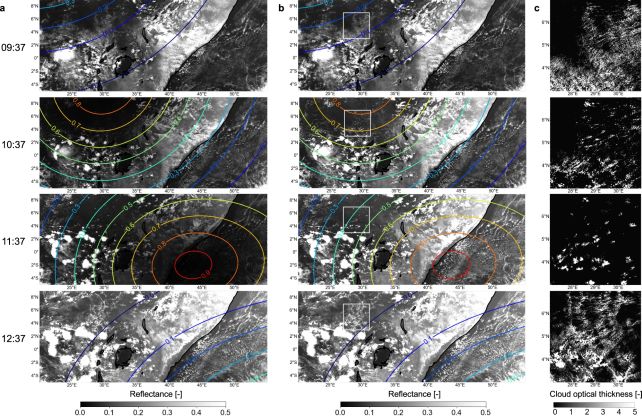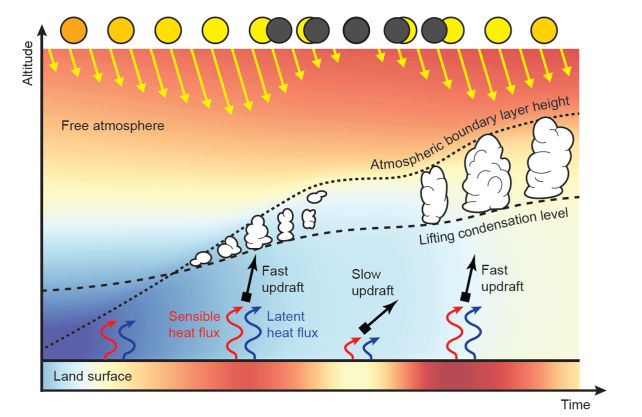When the Moon passes in front of the Sun in a solar eclipse, the jaw-dropping spectacle seems to change our world momentarily.
However, the effects on our planet are far more profound than a few moments of darkness during the daylight hours. And one effect that might surprise you? Clouds dissipate, and quickly – from the point at which just 15 percent of the Sun is obscured by the Moon.
It's not all types of clouds, obviously; otherwise, we'd never hear complaints about eclipses being spoiled by overcast weather.
A team led by Victor Trees of the Royal Netherlands Meteorological Institute and Delft University of Technology has determined that, in particular, shallow cumulus clouds over land vamoose with alacrity.
The finding, Trees says, has implications for future attempts at climate engineering.
"If we eclipse the Sun in the future with technological solutions, it may affect the clouds," he explains. "Fewer clouds could partly oppose the intended effect of climate engineering, because clouds reflect sunlight and thus actually help to cool down the Earth."

From our vantage point here on Earth's surface, figuring out how clouds behave during an eclipse is not easy.
But, Trees says, it's important: one of the solutions proposed to mitigate climate change is blocking some of the Sun's rays from reaching Earth's lower atmosphere. While modeling suggests this could effectively lower temperatures, we don't know what other effects it might have.
Because cloud layers can be quite complex, and cloud configurations are constantly in motion, counting clouds from Earth is not really a viable method of determining how solar dimming affects clouds.
Another option is to study them from above using satellites, but previously these have not taken the Moon's shadow during the eclipse into account in calculations of cloudtop reflectivity, resulting in a bias in measurements of cloud cover and thickness.
Trees and his colleagues figured out a way of correcting for the lunar shadow by taking into account the proportion of the Sun that is being obscured by any given time, from each location on Earth's surface.
"By far most of the solar eclipse consists of a partial eclipse, where there is still plenty of light outside," Trees says. "In this partial eclipse satellites receive enough reflected sunlight, after correcting for the obscuration, to reliably measure clouds."

The researchers applied their methods to data collected during three previous solar eclipses over the African continent, between 2005 and 2016. To their surprise, cumulus clouds start disappearing in large numbers when just 15 percent of the Sun is covered, and they disappear until the eclipse has ended.
Exactly why this was happening was unclear, so the team conducted simulations using cloud modeling software called DALES. These simulations showed that when the sunlight is blocked, the surface cools, which reduces the updrafts of warm air from the surface.
Warm updrafts are instrumental in forming cumulus clouds; they carry water vapor that condenses into droplets as it rises into cooler altitudes, forming clouds.
So, when the ground cools, and these updrafts cease, cumulus clouds can't be sustained, recommencing only when the Sun re-emerges and starts warming the ground again. This effect occurs only over land, since the ocean doesn't cool quickly enough for the effect to kick in.
Cumulus clouds are not rain clouds themselves, but they can transform into rain clouds. The team's finding suggests climate geoengineering that involves blocking sunlight could have a pretty detrimental effect on weather patterns.
Since this is sort of the opposite of what scientists want to happen, the phenomenon warrants further investigation, the researchers say.
The research has been published in Communications Earth & Environment.













No comments